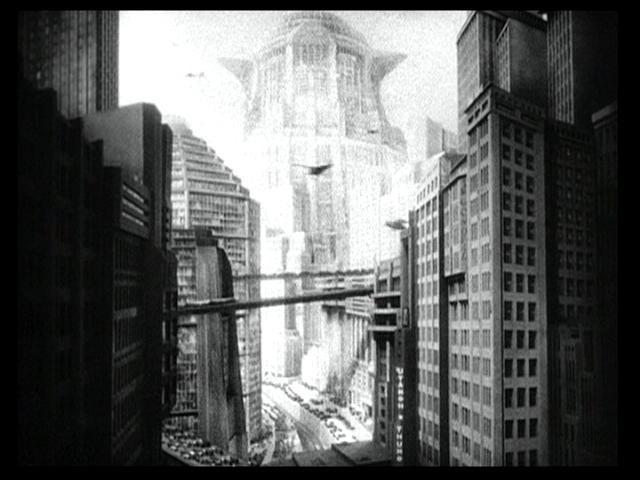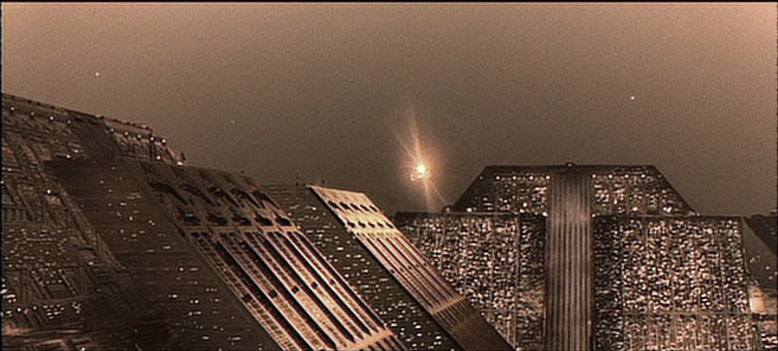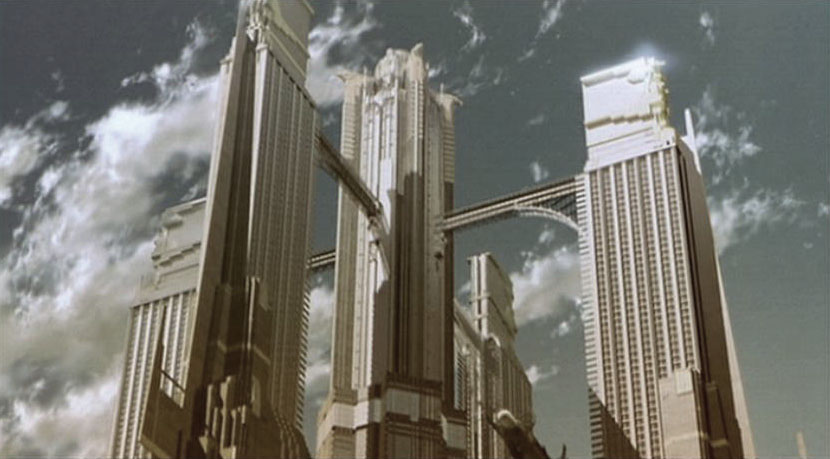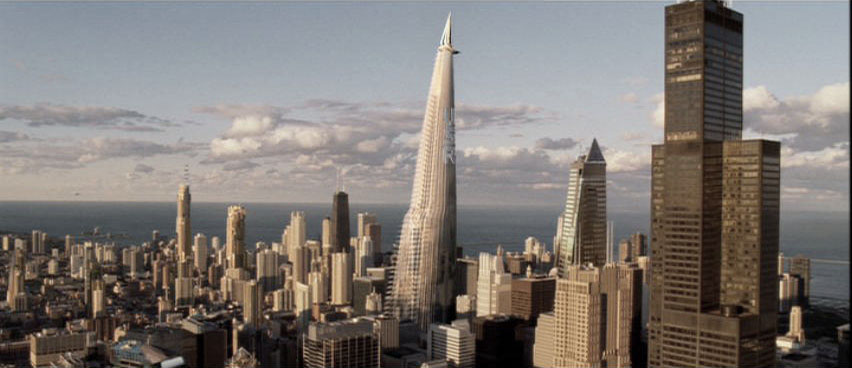
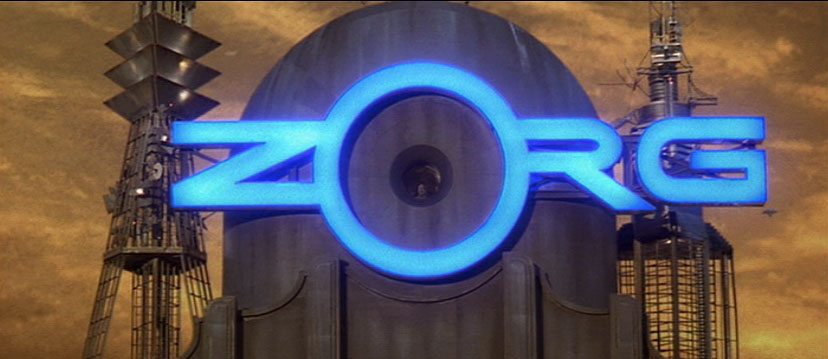
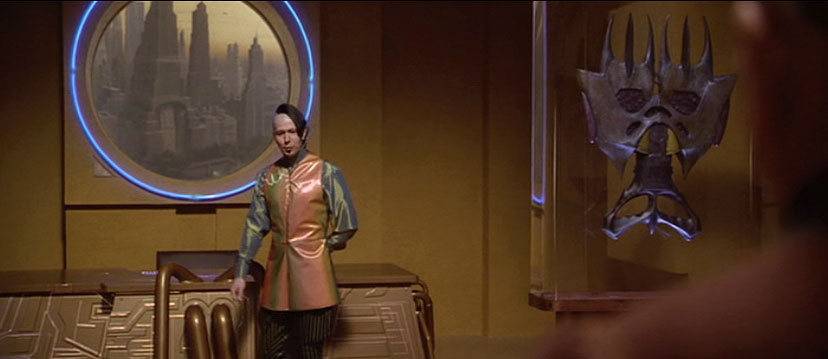
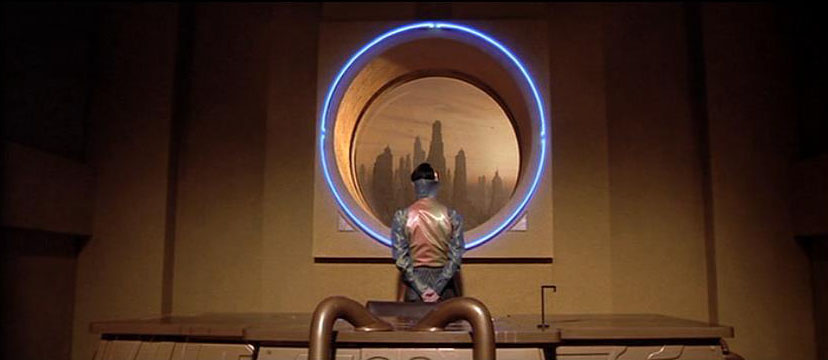
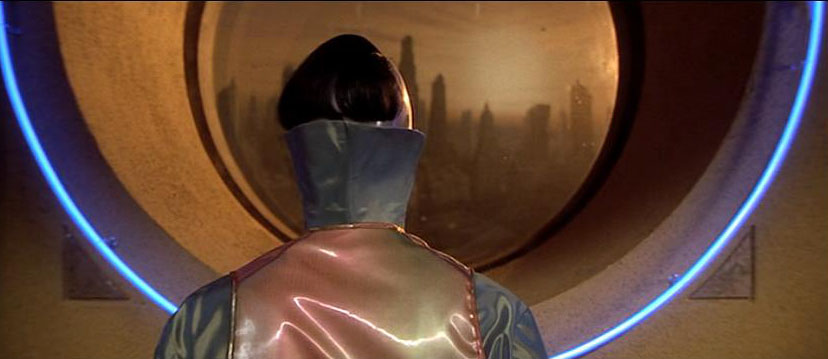
Another film that is perhaps not as historically significant as Lang's Metropolis and Scott's Blade Runner is Luc Besson 1997 film, The Fifth Element. The influences from both Metropolis and Blade Runner are clear, with the benefits of new computer technology Besson is able to create an intrinsic look at the future.
The multi level world he creates is not that dissimilar from Metropolis and Blade Runner, and like Metropolis Besson's future city, this time New York, has development both above and below grade. Vertical cannons are excavate downward allowing for the development to existing structures both above and below grade, exposing the subway and utilities, giving the city a utilitarian appearance. The motive for this move is profit, by excavating below existing buildings additional real estate is created, profit like in the two other cases plays a major role in the development of city and its architectural condition.
Also not unlike the previous two movies, located in New York's vertical center, the tallest tower is the office of yet another powerful capitalist, Zorg. But unlike Metropolis and Blade Runner the tower in no way makes use of religious architectural typologies. Rather, the building itself is a brutal mass, industrial and utilitarian in appearance. The use of an industrial building type in a predominant place of power renders a strong statement on the state about the state of architecture; a similar statement is echoed by many architectural critics including Megekawn, who in 1965 published a discourse on modern architecture entitled, Thoughts on Civilization in Architecture, in this work Megekawn clearly point his finger at profiteering capitalists,
"Modern architecture is and must be squarely be based on the solid achievements of modern science, technology and engineering. Why then does it so often tend to become something inhuman? I believe that one of the main reasons is that it is not always created merely to satisfy human requirements, but rather for some other reason, such as the profit motive." (Frampton 261)
Zorg's motives on all accounts are profit, he is willing to sacrifice the world's safety to make a profit, and his architectural representation screams sinister in a comical and over the top representation. The most dominant feature of Zorg's tower is the neon lettering that spells his name. The 'O' in Zorg, has a circular window in the middle that mimics a peephole from which he watches the world below, without being seen. Similar to the scene in Metropolis when Joh Frederson's son confronts him, there is a scene in The Fifth Element where Zorg is confronted about his transactions that may end in the destruction of earth, at this moment in the movie Zorg is in front of his 'peep-hole' window, with a spectacular view of the city, which Zorg's actions may very well destroy along with the rest of the planet.
